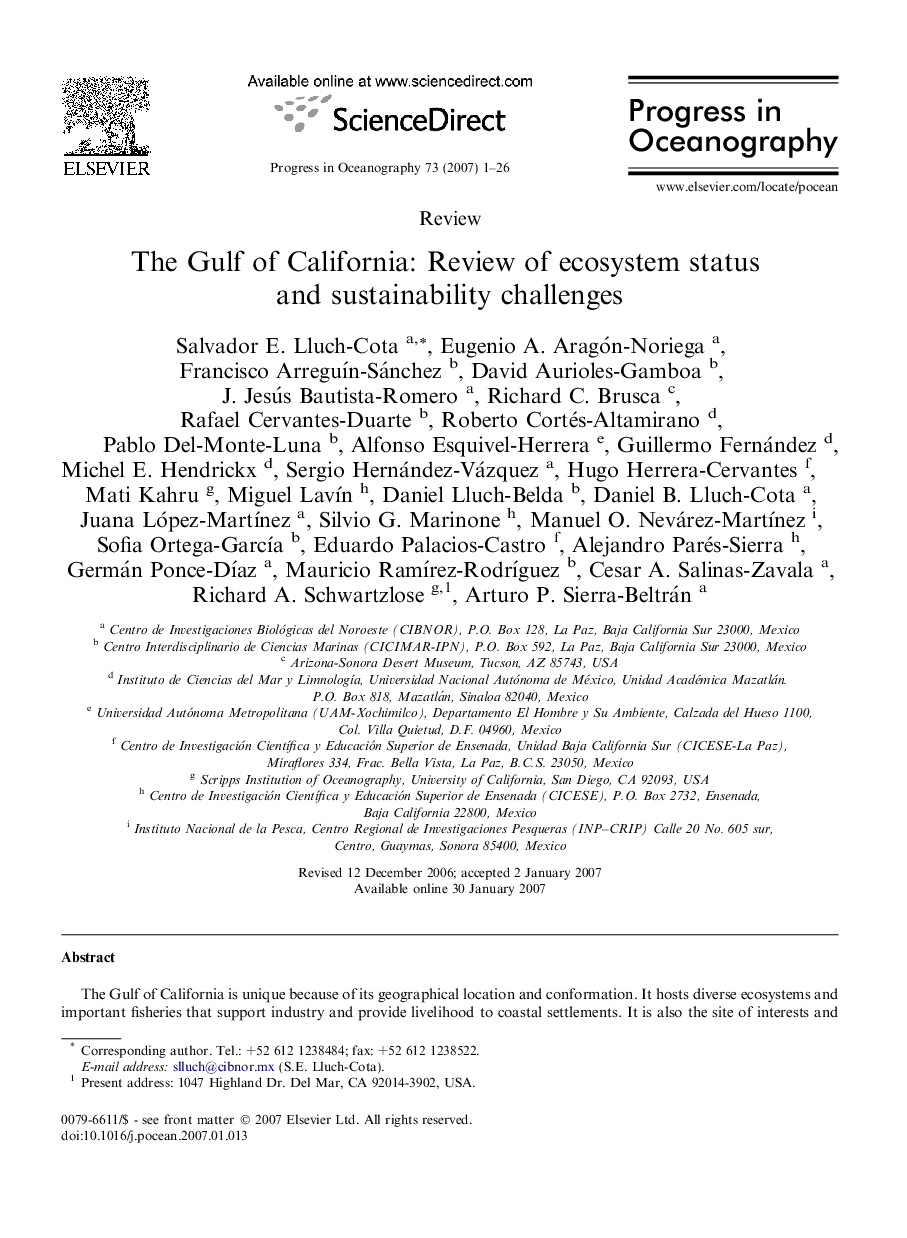| Article ID | Journal | Published Year | Pages | File Type |
|---|---|---|---|---|
| 4553934 | Progress in Oceanography | 2007 | 26 Pages |
The Gulf of California is unique because of its geographical location and conformation. It hosts diverse ecosystems and important fisheries that support industry and provide livelihood to coastal settlements. It is also the site of interests and problems, and an intense interaction among managers, producers, and conservationists. In this report, we scrutinize the abiotic (hydrography, climate, ocean circulation, and chemistry) and biotic (phyto- and zooplankton, fish, invertebrates, marine mammals, birds, and turtles) components of the marine ecosystem, and some particular aspects of climate variability, endemisms, harmful algal blooms, oxygen minimum layer, and pollution. We also review the current conditions and conflicts around the main fisheries (shrimp, small and large pelagic fishes, squid, artisanal and sportfishing), the most important human activity in the Gulf of California. We cover some aspects of management and conservation of fisheries, especially the claimed overexploitation of fish resources and the ecosystems, and review proposals for creating networks of marine protected areas. We conclude by identifying main needs for information and research, particularly the integration of data bases, the implementation of models and paleoreconstructions, establishment of monitoring programs, and the evaluation of fishing impacts and management actions.
